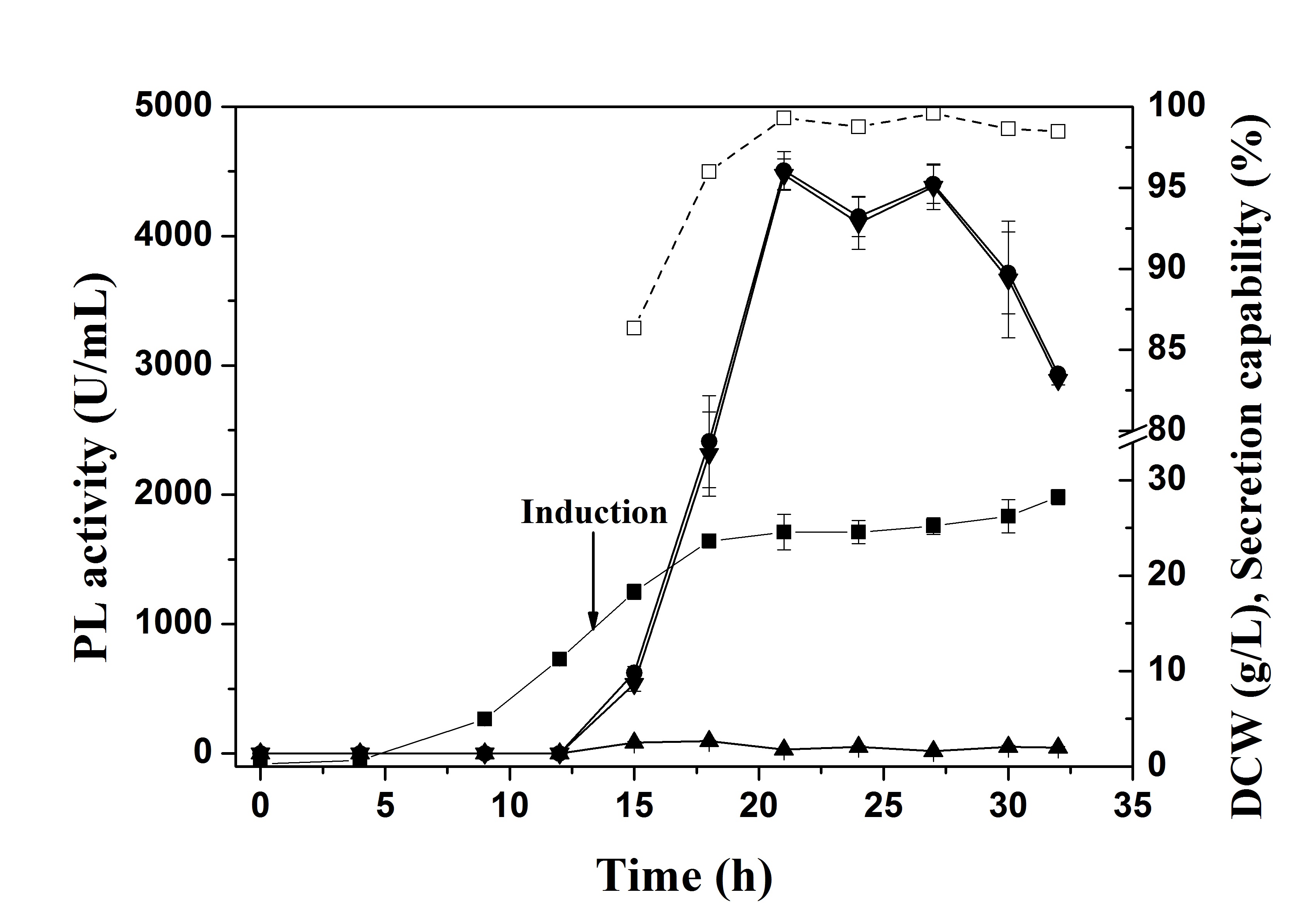Scientists developed a high-level extracellular production strategy for alkaline pectate lyase
Alkaline pectate lyase (PL, EC 4.2.2.2) is the key enzyme use for cotton fabrics pretreatment and plant fibers degumming in textile industry with the advantage of its mild and environment-friendly catalytic condition. The major limiting factors of this enzyme large-scale application are low yield and high cost. Therefore, it requires developing new techniques that are capable of high-level production of alkaline PL through an eco-effective process.
The Laboratory of Structural Bioinformatics and Integrative System Biology led by Professor SONG Jiangning from the Tianjin Institute of Industrial Biotechnology (TIB) of Chinese Academy of Sciences recently developed an eco-effective bioprocess strategy of high-level extracellular production of alkaline pectate lyase.
In this work, the researchers developed a multi-step glycerol feeding strategy according to the specific growth rate and cultivation condition to reach high cell density cultivation of recombinant Escherichia coli. They investigated the influences of cultivation varying factors on the pattern of extracellular production of recombinant PL, mainly including starting cell concentration, temperature, IPTG concentration in the post-induction phase. Especially, they made an effort to examine the differences of extracellular secretions patterns while different induced modes were employed.
They reported the highest PL yield (4478 U/mL) and productivity (497.2 U/mL/h) to date. The cost was very low which would facilitate industrial production and application of this enzyme. This optimized continuous lactose feeding strategy to obtain high-level production of recombinant PL.
This work showed that both IPTG and lactose can be used to induce PL high-level expression. Additionally, this study suggested that bioreaction processes induced at different temperatures exhibited significantly different extracellular secretion capabilities. Therefore, the inducer (e.g. IPTG) concentration should be controlled at an appropriate level to accommodate its extracellular secretion capability in order to reach the maximal extracellular PL production.
The research article entitled “Process optimization of high-level extracellular production of alkaline pectate lyase in recombinantEscherichia coliBL21 (DE3)” has been published in the Biochemical Engineering Journal.
This work was financially supported by grants from the Knowledge Innovation Program of CAS (KSCX2-EW-G-8) and Tianjin Municipal Science & Technology Commission (10ZCKFSY05600).

Time profiles for cell concentration (■), intracellular PL activity (▲), extracellular PL activity (▼), enzyme secretion capability (□), and total PL activity (●) obtained for cultivations induced at 0.4 mM IPTG and 30°C. (Image by SONG Jiangning’s group)
